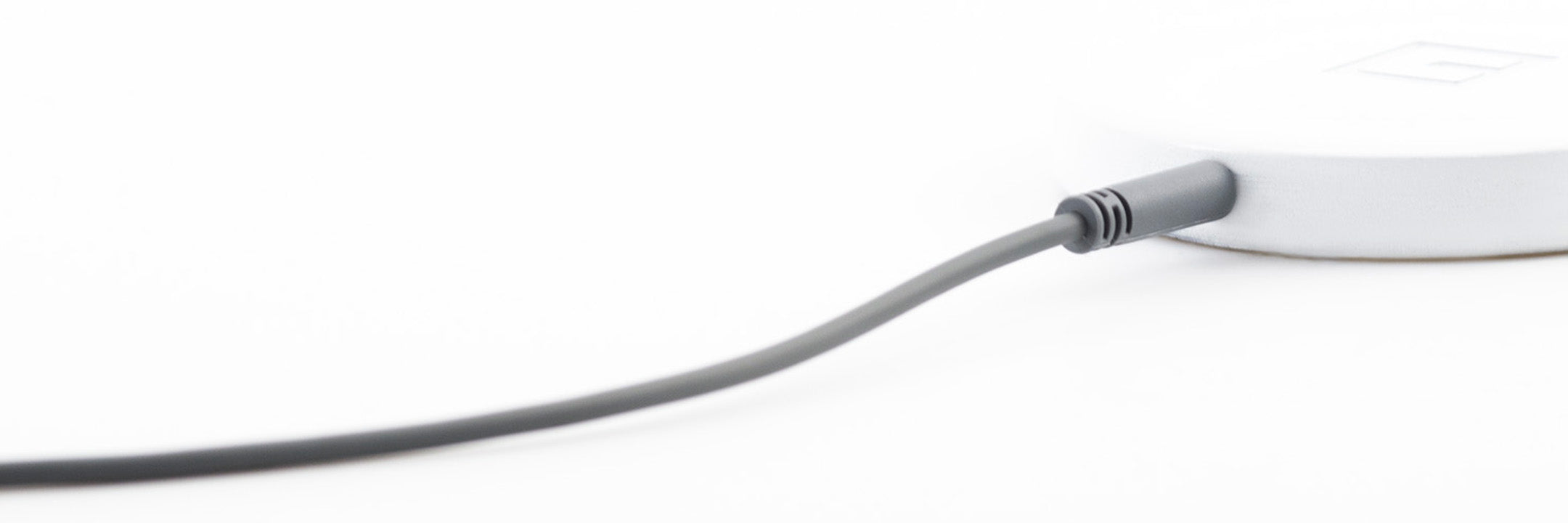Tensility’s wearable Bio-Compatible Wire is small, soft, and flexible, extruded using TPU material tested to ISO 10993 standards for skin irritation. This series features small wire gauges with aramid fiber filler for reduced abrasion between insulators and improved durability and impact resistance. The wires are perfect for wearable electronics and technology, as well as other audio, signal, and low voltage power applications where a small, flexible wire is desirable.
Bio-Compatible TPU Wire is available off-the-shelf in 24 to 32 AWG with two, three, or four conductors and a spiral shield, with wire diameters as small as 2.4 mm. The jacket material is TPU, and available insulation colors include black, white, and dark gray. If necessary, the recommended sterilization method for these wires is ethylene oxide or gamma radiation.
Audio cable assemblies incorporating Tensility’s wearable wire are available in three and four conductor variations. The cables feature gold plated plugs to ensure the highest quality performance. TPE overmolds are halogen- and phthalate-free and offer a better tactile experience for wearable applications.VIEW BIO-COMPATIBLE TPU WIRE
Key Features |
Applications |
|
|
|

FAQs
What is bio-compatible wire?
Bio-compatibility refers to how a material interacts with bodily tissues, with the intent that it will not cause toxic damage to the body if it comes in contact. In the case of bio-compatible wire, it will not cause skin irritation if it encounters your skin and is well suited for wearable applications (i.e. headphones).How are bio-compatible wires tested?
Tensility’s bio-compatible wire is tested per ISO 10993-5:2009 – in vitro cytotoxicity and ISO 10993-10:2010 – primary skin irritation standards.
ISO 10993-5:2009 testing methods provide parameters to measure the biological response in mammalian cells in vitro.
ISO 10993-10:2010 testing methods provide procedures to measure irritation and sensitization, in vivo and in silico. It specifies instructions on how to prepare materials for testing in vivo and specific tests to measure irritation in skin and other areas.
What is the ISO 10993 standard?
The ISO 10993 is a set of standards for biological evaluation of medical devices. It has 22 parts that specify testing and evaluation procedures for bio-compatibility in various aspects, materials and forms.How do you sterilize bio-compatible wire?
The recommended method of sterilization for Tensility’s bio-compatible TPU wire is Ethylene Oxide (EtO) or hydrogen peroxide vapor. TPU may be sterilized by Gamma radiation, UV radiation, or Electron Beam radiation, but discoloration may occur. Autoclave (steam) sterilization is not recommended with TPU.
How do you process bio-compatible wire?
In addition to its soft feel and flexible nature, TPU jacketed wire is great for its resistance to abrasion and chemicals. As a result, TPU wire may be a little tricky to process, and require extra effort compared to alternative materials like PVC. Stripping short sections of the wire jacket can often be accomplished with a high-quality pair of wire strippers, but for longer sections, pneumatic stripping or hot peeling machines may be required. Tensility’s bio-compatible wire also contains Aramid fibers to help reduce abrasion and increase flex cycles, but this material also increases the difficulty of processing. Bio-compatible wire containing aramid fibers will likely require the use of a cutting blade or scissors specially designed to cut this material.

